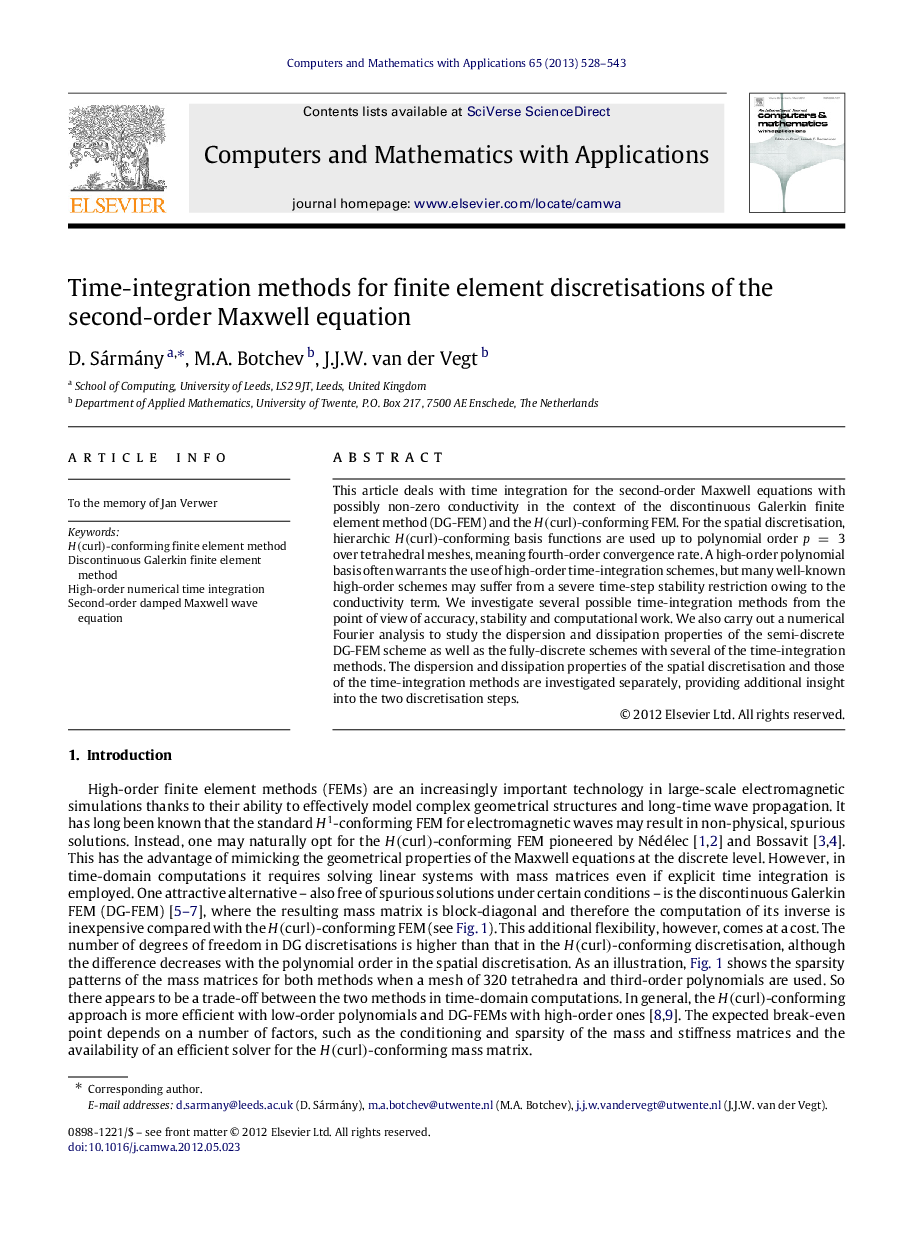| Article ID | Journal | Published Year | Pages | File Type |
|---|---|---|---|---|
| 472832 | Computers & Mathematics with Applications | 2013 | 16 Pages |
This article deals with time integration for the second-order Maxwell equations with possibly non-zero conductivity in the context of the discontinuous Galerkin finite element method (DG-FEM) and the H(curl)-conforming FEM. For the spatial discretisation, hierarchic H(curl)-conforming basis functions are used up to polynomial order p=3p=3 over tetrahedral meshes, meaning fourth-order convergence rate. A high-order polynomial basis often warrants the use of high-order time-integration schemes, but many well-known high-order schemes may suffer from a severe time-step stability restriction owing to the conductivity term. We investigate several possible time-integration methods from the point of view of accuracy, stability and computational work. We also carry out a numerical Fourier analysis to study the dispersion and dissipation properties of the semi-discrete DG-FEM scheme as well as the fully-discrete schemes with several of the time-integration methods. The dispersion and dissipation properties of the spatial discretisation and those of the time-integration methods are investigated separately, providing additional insight into the two discretisation steps.
